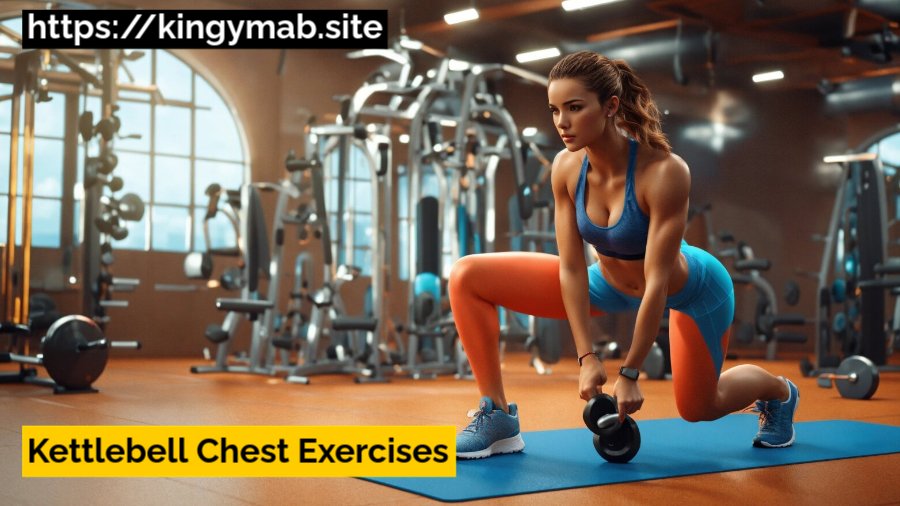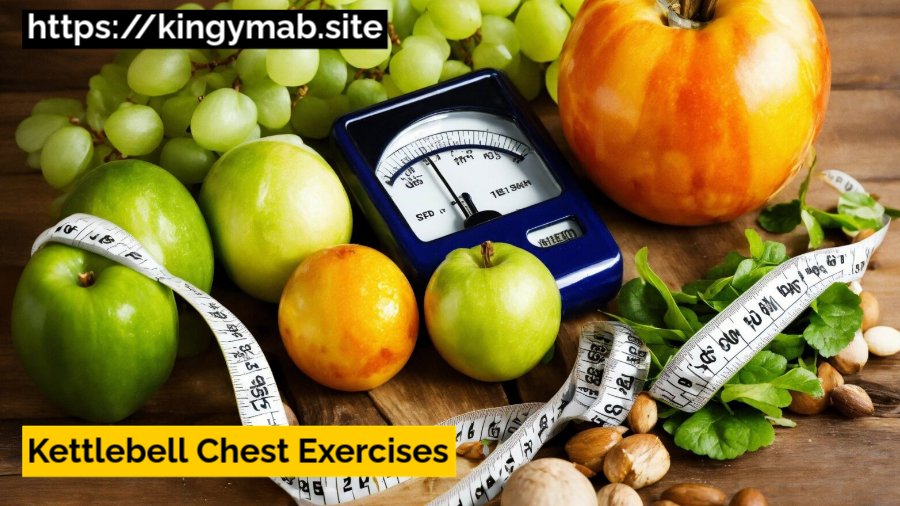Kettlebell exercises are an excellent way to enhance my chest workout routine, providing both strength and hypertrophy benefits. In this article on Best Kettlebell Chest Exercises, I’ll explore various kettlebell movements that effectively target the chest muscles.
- Overview of kettlebell training benefits.
- Importance of chest strength in overall fitness.
- Brief introduction to the exercises covered.
Key Points
- Kettlebells offer dynamic movements for strength training.
- Exercises can enhance muscle hypertrophy and endurance.
- Suitable for various fitness levels and can be done at home.

Kettlebell Training Benefits I love using kettlebells because they bring so much versatility to my workouts. Here are a few reasons why I think kettlebells are fantastic:
- Versatility: I can perform a wide range of exercises, from traditional lifts to dynamic movements that keep things interesting.
- Improved Grip Strength: The unique design of kettlebells really challenges my grip, which is beneficial for overall lifting capabilities.
- Core Activation: Many kettlebell exercises engage my core, helping me improve stability and balance.
Best Kettlebell Chest Exercises
- Kettlebell Floor Press
- Overview: This is a beginner-friendly exercise that targets my pectorals nicely.
- Benefits: The floor press primarily works my pectoralis major, anterior deltoids, and triceps brachii. It’s a great way to build upper body strength.
- Proper Form:
- I sit on the floor with my legs extended and a kettlebell in each hand at my sides.
- Then, I lie back, keeping my elbows slightly bent and planted on the ground.
- I press the kettlebells straight up until my arms are locked out, squeezing my pecs at the top.
- Bench Press with Kettlebells
- Overview: This variation increases stability challenges compared to traditional dumbbell bench presses.
- Differences: Using kettlebells requires more upper body stability, which I find really effective for muscle activation.
- Variations:
- I like to switch between bilateral (both arms) or one-arm variations for added core activation.
- Incline Bench Press with Kettlebells
- Overview: This exercise targets my upper chest effectively, focusing on the clavicular head of the pectoralis major.
- Importance: Incline pressing helps define my upper chest muscles, which is something I always aim for.
- Recommended Sets and Reps: I usually go for 2-4 sets of 8-12 repetitions.
- Flyes with Kettlebells
- Overview: Flyes enhance chest isolation and stability while working my pectorals.
- Comparison: I’ve found that kettlebell flyes may be more challenging than dumbbell flyes due to their center of mass, which keeps me engaged throughout the movement.
- Tips for Effective Execution:
- I always keep a slight bend in my elbows during the movement to protect my joints.
- Deficit Push-Up with Kettlebells
- Overview: This exercise increases range of motion for lower pec engagement, making it a great choice for overall upper body strength.
- How to Perform Safely:
- I place kettlebells shoulder-width apart and grip them while in a plank position.
- Lowering my body until my chest nearly touches the ground before pushing back up really helps target those lower pecs.
Programming Recommendations Here’s how I like to incorporate these exercises into my workout routine:
| Exercise | Sets | Reps |
| Kettlebell Floor Press | 3-4 | 6-10 |
| Bench Press with Kettlebells | 3-4 | 6-10 |
| Incline Bench Press | 2-4 | 8-12 |
| Flyes with Kettlebells | 2-4 | 10-15 |
| Deficit Push-Up | 3 | As many as possible |

Common Mistakes to Avoid When performing kettlebell chest exercises, here are some common pitfalls I’ve noticed:
- Improper Form: I always prioritize good form over lifting heavier weights. This helps prevent injuries and ensures effective muscle activation.
- Neglecting Warm-Up: Failing to warm up properly can lead to injuries. I always include dynamic stretches before starting my workout.
Safety Tips for Kettlebell Workouts To keep my workouts safe and effective:
- I start with lighter weights to master form before progressing to heavier kettlebells.
- Incorporating warm-up and cool-down routines helps prepare my muscles and aids recovery.
1. Kettlebell Selection Guide
How to Choose the Right Weight:
When I’m starting out, I should go with lighter kettlebells (4–8 kg). They help me build a foundation and learn proper form without putting too much strain on my muscles. For more advanced kettlebell exercises, I can move up to heavier weights (12–16 kg) as I get stronger.
Difference in Kettlebell Quality:
I’ve found that cast-iron kettlebells are durable and affordable, but they tend to be a bit rough and not ideal for high-rep workouts. On the other hand, competition kettlebells are smoother, more uniform in shape, and better for higher rep ranges and competitions. However, they tend to be pricier.
| Cast-Iron Kettlebells | Competition Kettlebells |
| Affordable, durable, and reliable | Smoother finish and uniform shape |
| Ideal for beginners and casual lifters | Better for competitions and high reps |
| Heavier and more robust | Often more expensive |
Budget-Friendly Options:
I’ve realized that there are plenty of affordable options that are durable enough for beginners. Websites and local fitness stores often carry great deals on cast-iron kettlebells that won’t break the bank but will still serve me well.
2. Progressive Overload Techniques
How to Progress in Kettlebell Chest Exercises:
To keep improving, I focus on gradually increasing the weight, reps, or sets. For example, I might start with 10 reps of a kettlebell chest press and increase the weight as I build strength. Another technique I like is using time under tension—slowing down the movement to make each rep more challenging. Supersets are also great; they really push my muscles to grow and adapt.
3. Advanced Variations and Modifications
Advanced Variations:
I’ve tried single-arm kettlebell chest presses, and I find they engage my core much more than the standard two-arm press. Alternating kettlebell flyes also add variety and force me to balance and stabilize more, which feels great for strengthening my chest.
Beginner Modifications:
When I’m starting out, I stick to lighter weights and reduce my range of motion if I feel unsteady. This helps me build confidence while focusing on proper form before I increase the intensity.
4. Common Mistakes with Solutions
Grip Issues:
In my experience, gripping the kettlebell too tightly can limit my range of motion. I’ve learned that a relaxed grip allows me to move more freely, especially during exercises like the kettlebell floor press.
Elbow Position:
I’ve also noticed that keeping my elbows slightly down, not flared out, helps maximize chest engagement. This keeps the focus on my chest muscles rather than my shoulders.
5. Muscle Groups Worked
Kettlebell Floor Press:
I’ve noticed the kettlebell floor press works my pectoralis major (chest), anterior deltoid (shoulder), and triceps brachii (arms). It’s a great compound movement that hits multiple areas of my upper body.
Deficit Push-Up:
Deficit push-ups target my lower chest, shoulders, and triceps. I find they’re a great progression from regular push-ups, especially for building strength in those harder-to-hit areas.
6. Benefits Comparison
Kettlebells vs. Dumbbells:
I’ve found that kettlebells challenge my stability more compared to dumbbells. While dumbbells allow for easier weight progression, kettlebells force me to engage my core, improving balance and stability, which I think is a great bonus for my overall strength.
7. Nutrition Tips for Chest Development
Protein-rich foods like lean chicken, eggs, and plant-based proteins help fuel my chest development. I’ve learned that eating a pre-workout meal high in carbs boosts my energy, while a post-workout meal rich in protein supports recovery and muscle growth.

8. Success Stories or Case Studies
One thing I’ve noticed from my own progress is a 20% increase in chest strength after consistently using kettlebell exercises. It’s been really motivating to see those results over time.
9. Printable Workout Plan
I’ve put together a downloadable workout chart that includes exercise names, sets, reps, and recommended rest periods. It’s a handy tool for me to keep track of my progress and make sure I stay consistent with my kettlebell training.
10. Interactive Elements
I added some polls and quizzes to keep things engaging:
- “Which kettlebell chest exercise is your favorite?”
- “How many reps of deficit push-ups can you do in one go?”
11. Call-to-Action for Social Sharing
I always encourage readers to share their kettlebell workouts on social media and tag us. It’s inspiring to see how others are progressing and helps create a community of like-minded fitness enthusiasts.
12. Scientific Backing
Research shows that kettlebell training can improve grip strength by up to 20%, making it a highly effective tool for upper body workouts. I’ve personally seen these benefits and can vouch for how kettlebells enhance overall strength and stability.
Also Read Our Article On Fitness:Adductor Muscles Exercises for Strength and Performance
FAQs
What are the best kettlebell exercises for beginners?
I recommend starting with kettlebell floor presses and bench presses, as they focus on basic movements while building strength.
How do kettlebell exercises compare to dumbbell exercises?
Kettlebells provide a unique center of mass that enhances grip strength and stability, making them beneficial for dynamic movements.
Can kettlebells help in building muscle size?
Absolutely! When used correctly, kettlebells can effectively promote muscle hypertrophy similar to traditional weights.
Conclusion
Kettlebell exercises are versatile and effective tools for enhancing chest strength and overall fitness.
- Recapping key exercises discussed: floor press, bench press, incline press, flyes, and deficit push-ups keeps me focused on what works best.
- Highlighting the importance of incorporating variety in workouts helps me target different muscle groups effectively.
- I encourage you to try these exercises for improved results in your fitness journey!





